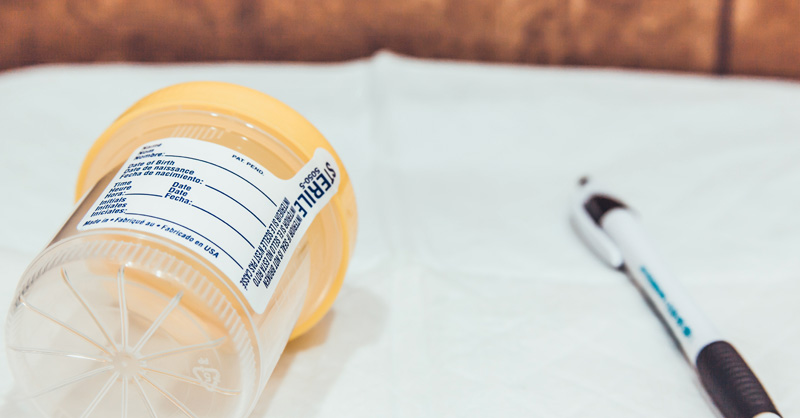Help Employees Stay Safe With a Drug-Free Workplace Program

Drug and alcohol abuse are among the nation’s leading illnesses. Substance abuse does not discriminate against race or economic groups. Dependency on drugs or alcohol often leads to occupational accidents, increased absenteeism, lost productivity, turnover, morale and disciplinary problems, deterioration of family relations, and crime. According to the 2019 National Survey on Drug Use and Health, over 165 million Americans had used substances in the prior month. This includes alcohol, marijuana, cocaine, and other controlled substances.
Many large companies have realized that substance abuse affects their employees and profitability and have started drug-testing programs. However, smaller companies protest that implementing a drug-free workplace program would be too expensive, and the task would be too difficult. Drug testing may pay for itself through productivity gains and improvements in workers’ compensation results.
An effective program includes the following:
- A written substance abuse policy
- Education/Training
- Drug and alcohol testing
- Deciding what to test for
- Employee Assistance Program
Policy
The substance abuse policy is the most important component of the program because it provides a written explanation to employees on:
- Why the program has been adopted
- Provide a safe and healthy workplace
- Ensure employee wellness
- Continually produce quality products
- Protect company resources and reputation
- Comply with state and federal regulations
- Who will be drug/alcohol tested?
- All applicants/employees
- Employees in designated positions (i.e., safety or security-sensitive, management)
- Employees regulated by state or federal law to be tested
- Under what circumstances will an applicant/employee be tested?
- Pre-Job offer
- Post-Job offer
- Post-Accident
- Reasonable suspicion
- Random
- Follow-up to rehabilitation
- Consequences of testing positive, refusing to be tested, or selling drugs/alcohol at work
- Revocation of a job offer or refusal to be interviewed
- Suspension with or without the opportunity to seek rehabilitation
- Probation with or without the opportunity to seek rehabilitation
- Termination with or without the opportunity to seek rehabilitation
Every employee should receive a copy of the company-wide substance abuse policy and sign a consent form to test. Retain the form in the employee’s personnel file. At least a 30-day notice should be given to employees prior to adopting drug testing.
Education/Training
The more employees learn about the company’s substance abuse policy, the less likely they are to challenge the policy if they test positive for drugs or alcohol. Furthermore, supervisors need additional training in identifying substance abuse, documenting problems, and intervening so that help can be provided.
Drug and Alcohol Testing
There are four components to the testing process:
- Specimen Collection
The specimen (urine for a drug test, breath/blood for alcohol testing) should be provided at a qualified collection site (i.e., a medical clinic). The clinic should maintain the proper chain of custody forms and procedures throughout the collection process to ensure that the specimen has not been altered. Furthermore, a photo identification card should be required to ensure that the requested applicant/ employee is providing the specimen.
- Laboratory Analysis
Analysis should only be done at a SAMHSA (Substance Abuse & Mental Health Service Administration) certified laboratory. An initial screening, Enzyme Multiplied Immunoassay Technique (EMIT) should be done on the urine specimen. Any positive results from this screen should be confirmed through Gas Chromatography with Mass Spectrometry (GC/MS). This initial/confirmation test combination has been upheld in court and is required for all federally mandated programs and by many states.
- Medical Review
To ensure that the positive test result was not due to the proper use of prescribed medication, employees testing positive should be interviewed by a Medical Review Officer (MRO). If the MRO determines that there was a legitimate medical reason for the presence of drugs, the MRO can overturn the test result and report it as a negative.
- Confidential Results Reporting
Strict confidentiality should be maintained regarding the results of drug or alcohol tests and any rehabilitation an employee may participate in. Information should be provided on a need-to-know basis only.
Deciding What to Test For - Panel Tests
Panel tests are typically comprised of 4, 5, 7 and 10 panel tests. Each of these tests screen for an increased number of drugs:
- 4 Panel Test: Marijuana (THC), Cocaine, Opiates and Methamphetamine.
- 5 Panel Test (Most commonly used by employers): Amphetamines, Cannabinoids, Cocaine, Opioids and Phencyclidine (PCP).
- 7 Panel Test (Used in industries with heavy machinery and DOT): Marijuana, Cocaine, Opiates, Phencyclidine, Amphetamines, Benzodiazepines and Barbiturates.
- 10 Panel Test (Used by law enforcement and occupational medicine employees): Marijuana, Cocaine, Phencyclidine, Amphetamines, Opiates, Benzodiazepines, Barbiturates, Methadone, Propoxyphene and Quaaludes.
- Panels are often modified by organizations to fit their desired needs; many are based upon the work being done to protect the organizations and their employees.
Employee Assistance Program (EAP)
Offering rehabilitation and counseling services to an employee and/or family member can help retain a valued employee. A qualified EAP typically charges an annual fee based on the number of employees at a company. This covers a limited number of counseling sessions and a referral for additional treatment when needed. Accident & Health Insurance often covers some of the employee’s rehabilitation expenses.
Steps Involved to Implement a Drug-Free Workplace Program
- Gain management commitment.
- Announce your program at least 30 days prior to implementation.
- Prepare your substance abuse policy and have an attorney review it.
- Locate a clinic for collection. Contract with a laboratory the MRO.
- Distribute your policy to all employees/supervisors and host a training session.
- Have each employee sign the consent form.
- Administer your program as described in your policy - practicing strict confidentiality.
For additional Loss Control guidance, please visit the Plan & Protect safety hub.
Resources